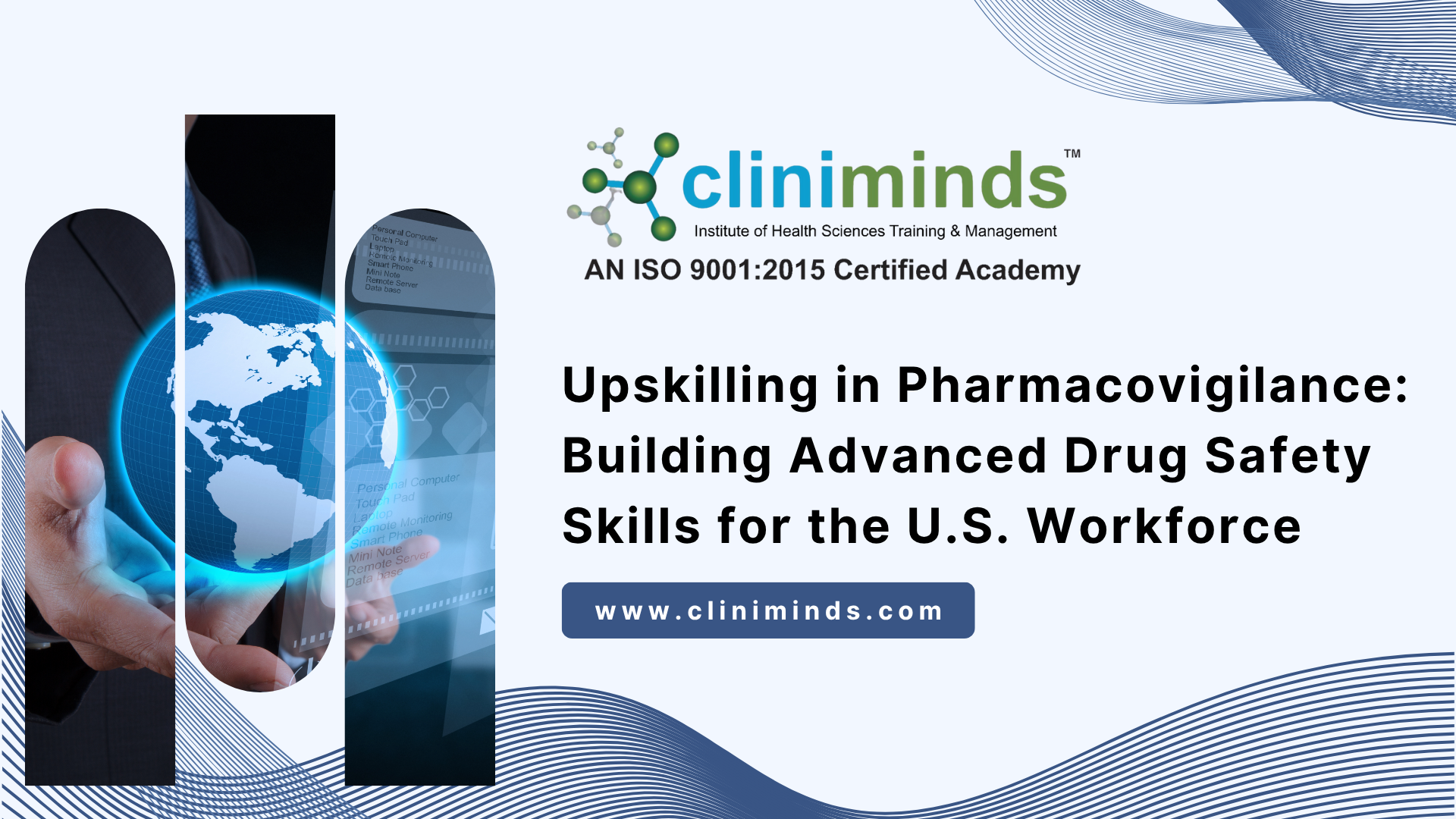Upskilling in Pharmacovigilance: Building Advanced Drug Safety Skills for the U.S. Workforce

Pharmacovigilance (PV), or drug safety, is one of the most essential functions in the pharmaceutical, biotechnology, and healthcare ecosystem. It ensures the ongoing safety of medicines, vaccines, biologics, and advanced therapies by monitoring and evaluating adverse events. In the United States, the demand for well-trained pharmacovigilance professionals has been rising steadily. This is driven by the country’s strong pharmaceutical industry, the rapid entry of complex products (such as biologics and gene therapies), and the regulatory focus on local workforce development.
As the U.S. government emphasizes hiring U.S.-based professionals in life sciences and drug safety, the need for advanced skills and specialized training has never been greater. Both newcomers to the field and professionals with prior experience must continually upgrade their expertise to remain competitive in a rapidly evolving market.
Why Upskilling Matters in the United States
Evolving Industry Expectations
- PV roles have moved far beyond simple case processing. Today, professionals are expected to analyze data, evaluate trends, prepare regulatory reports, and engage in strategic safety planning.
- U.S.-based employers prefer professionals who can demonstrate a strong understanding of both domestic (FDA) and international (EMA, ICH) guidelines.
Digital Transformation
- Artificial intelligence (AI), automation, and big data analytics are reshaping PV operations. Professionals who can oversee automated workflows, validate machine learning models, and interpret real-world data (RWD) are in high demand.
Government Workforce Policies
- With a push to strengthen domestic biopharmaceutical expertise, regulatory and industry bodies are prioritizing training and hiring U.S.-based professionals for drug safety roles. Upskilling programs directly address this workforce gap.
| Skill Area | Advanced Competencies | Career Impact |
|---|---|---|
Case Processing & Reporting | Narrative writing, causality assessment, MedDRA/WHO-DD coding | Entry-level foundation |
Aggregate Reports | PSURs, PBRERs, DSURs, RMPs, regulatory submissions | Core requirement for mid- to senior-level roles |
Risk Management & Signal Detection | Benefit–risk evaluation, epidemiology, signal validation | Strategic/global safety leadership |
Digital & Data Analytics | Argus/ARISg/Veeva, SQL, AI-enabled PV systems, RWD/RWE | Future-ready expertise |
Specialized Product Expertise | Biologics, biosimilars, vaccines, cell/gene therapies, digital therapeutics | High-value niche skills |
Soft Skills | Leadership, communication, ethical decision-making | Cross-functional leadership |
Why Upskilling Matters in the United States
- AI and Automation Oversight: Monitoring and validating AI-enabled workflows.
- Real-World Evidence (RWE): Using EHRs, claims databases, and registries for safety insights.
- Advanced Therapeutics Safety: Skills in monitoring cell/gene therapies and digital health products.
- Regulatory Science: Strong knowledge of FDA’s Sentinel Initiative, REMS, and ICH E2E signal detection frameworks.
- Global Collaboration: Alignment with international safety reporting (EudraVigilance, MHRA, Health Canada).
| Career Stage | Typical Role | Skills Required |
|---|---|---|
Entry-Level | Drug Safety Associate | Case processing, ICSR reporting, seriousness assessment, narrative writing |
Mid-Level | PV Scientist / Safety Specialist | Aggregate reporting (PSURs, PBRERs, DSURs), signal detection, safety database expertise |
Clinical/Scientific Role | Drug Safety Physician / Medical Reviewer | Medical evaluation of adverse events, causality assessment, MedDRA coding, benefit–risk evaluation, medical narrative writing |
Senior-Level | PV Manager / Safety Lead | Risk management planning, regulatory submissions, oversight of aggregate reporting, team management |
Strategic/Leadership | Safety Director / QPPV (U.S. equivalent oversight role) | Global PV strategy, advanced regulatory knowledge, inspection readiness, cross-functional leadership |
Career Pathway Narrative
- At the entry-level, professionals often start as Drug Safety Associates, focusing on ICSR case processing and regulatory compliance.
- As they progress to mid-level roles, they expand into aggregate reporting, signal detection, and safety database management.
- Clinicians or experienced scientists may enter as Drug Safety Physicians or Medical Reviewers, where they provide medical judgment on cases, assess benefit–risk, and lead signal validation efforts.
- At the senior level, professionals take on team leadership roles, managing risk plans and ensuring regulatory submissions are complete and compliant.
- Finally, at the strategic level, PV leaders and QPPV equivalents shape global safety strategies, interface with regulators, and ensure organizational inspection readiness.
Conclusion
For U.S.-based drug safety professionals, upskilling is not simply an advantage—it is a necessity. The combination of regulatory expectations, government workforce policies, and technological advancements has created a pressing need for advanced pharmacovigilance expertise. By investing in specialized training in aggregate reporting, risk management, AI oversight, and real-world data analytics, professionals can secure competitive roles, progress to leadership positions, and contribute directly to safeguarding public health.
In a globalized and highly regulated industry, the U.S. stands at the forefront of drug safety, and its workforce must be equipped with the skills of tomorrow to maintain that leadership.
References
- Kugener V. et al. The American Program in Pharmacovigilance (Am2P). Therapeutic Innovation & Regulatory Science, 2024.
- AVS Life Sciences. 10 Essential Skills for Drug Safety Jobs in 2025.
- Prestige Scientific. Human Skills in the Age of AI for Pharmacovigilance.
- U.S. Food and Drug Administration (FDA). Sentinel Initiative Annual Report 2023.
- International Council for Harmonisation (ICH). E2E Pharmacovigilance Planning Guideline.
- www.cliniminds.com



